How to Preserve Lemon Peel
This post may contain affiliate links, view our disclosure policy for details.
In this post, I’ll show you how to preserve lemon peel. There are a few ways to do this, but in this post, we are going to use oil and salt for this preserved lemon rind. It’s delicious! I love eating it with any chicken or fish dish or adding it to any sandwich. It lasts forever and is very simple to make.
Why the heck would you bother preserving lemon peels? Well, because they are so delicious!
Besides, the chickens won’t eat them and they take forever to compost, so in my belly they go.
Preserved lemon peel is a Middle Eastern/Moroccan kinda dish. In Israel, we don’t use salad dressing as much as we use it here in the U.S. Most of the time when we make salads we dress them with olive oil, lemon juice, and salt (you can watch me do it in this video).
It’s so simple, so tasty, and so much healthier than all those dressings that have a ton of mayo in them.
How to Preserve Lemon Peel…
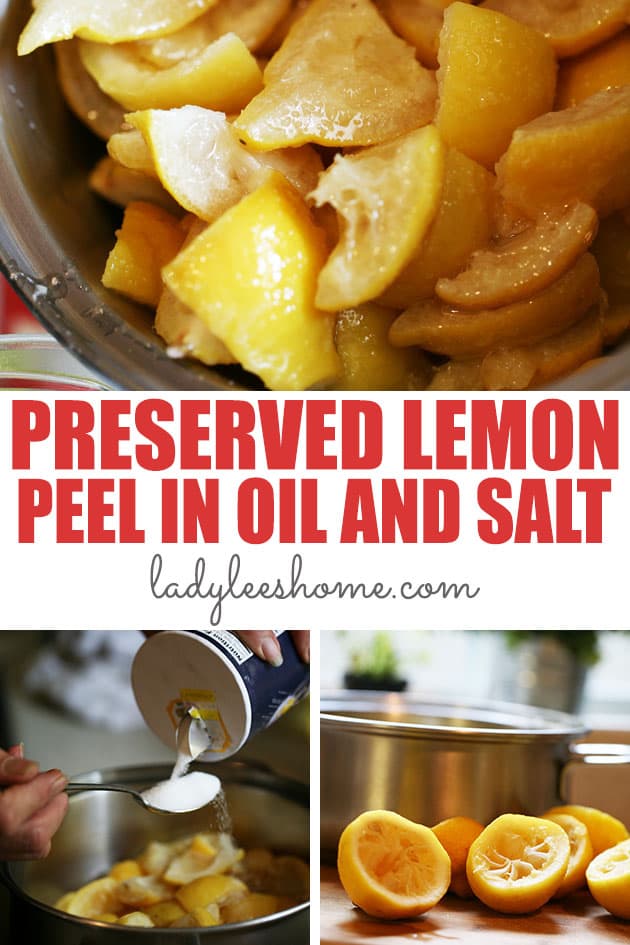
And we eat a salad with almost every meal in Israel! So what is one going to do with so many lemon peels at the end of the week?
Preserve them, of course.
Preserved lemon peel will last pretty much forever and you can use it in many ways which we will talk about later.
Tools That We Are Going to Need…
This simple recipe doesn’t require much…
Cutting board – for preparing the lemons.
Knife – to cut the lemon peels.
Pot – we are going to boil the lemon peels so choose a pot large enough.
Measuring spoons – to measure the oil and salt.
A jar – to store the preserves lemon peels in. I used a quart jar for the peels of six lemons.
That’s all we need!
Preserved Lemon Peel…
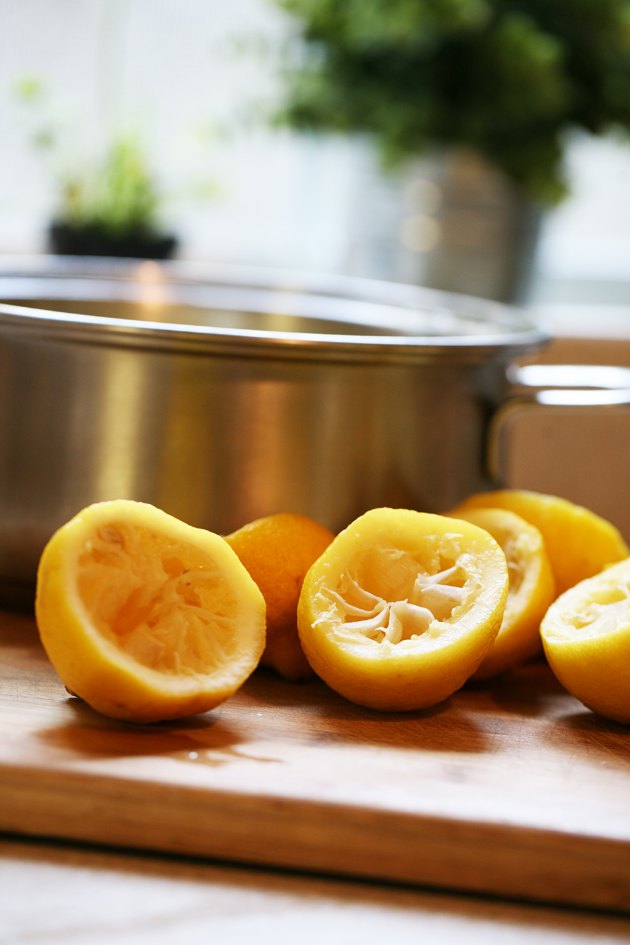
First, acquire a few lemons. Let’s say, you used the juice for cooking or salad or whatever, instead of throwing away the peel, place it in a zip-lock bag or a container in the fridge.
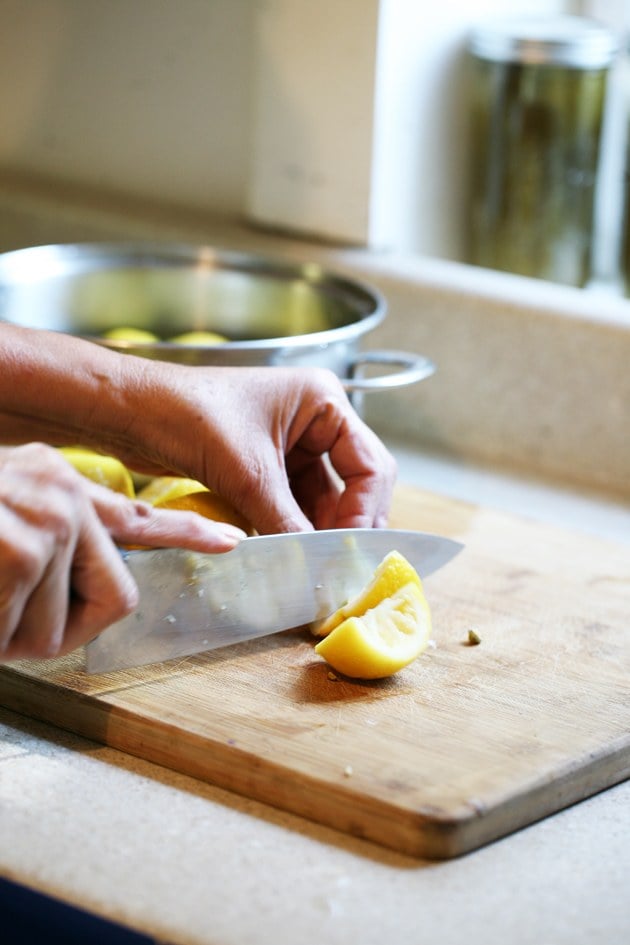
Once you have a few lemons, cut them into small pieces. We used about 6 lemons here, I think, and we cut each lemon into 8 pieces. You can go smaller or larger with your pieces, there are no rules.
Just a side note here, you can keep the lemon seeds and use them in jams since they have natural pectin in them and will thicken your jam naturally (I show how to do this in my Peach Jam post so make sure to check it out).
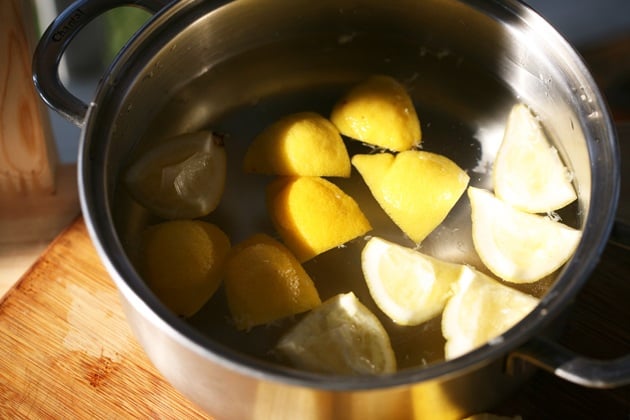
Place your lemon peels in a pot and fill it with water.
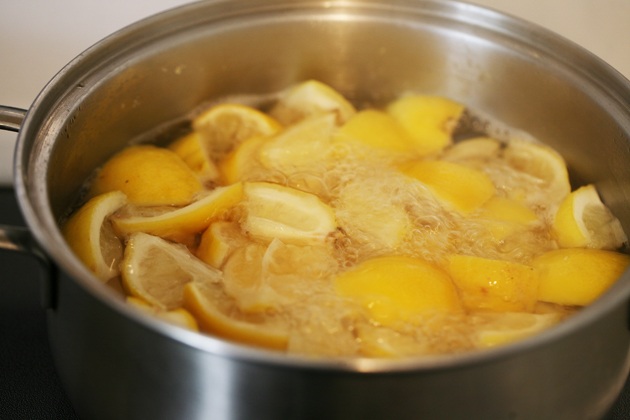
Place your pot on the stove top and bring the water to a boil. Lower the heat but keep your water boiling gently.
We want the peels to soften, this might take 30 minutes or maybe 45, depending on how thick your lemon peels are. Keep checking the softness with a fork just as you do with potatoes.
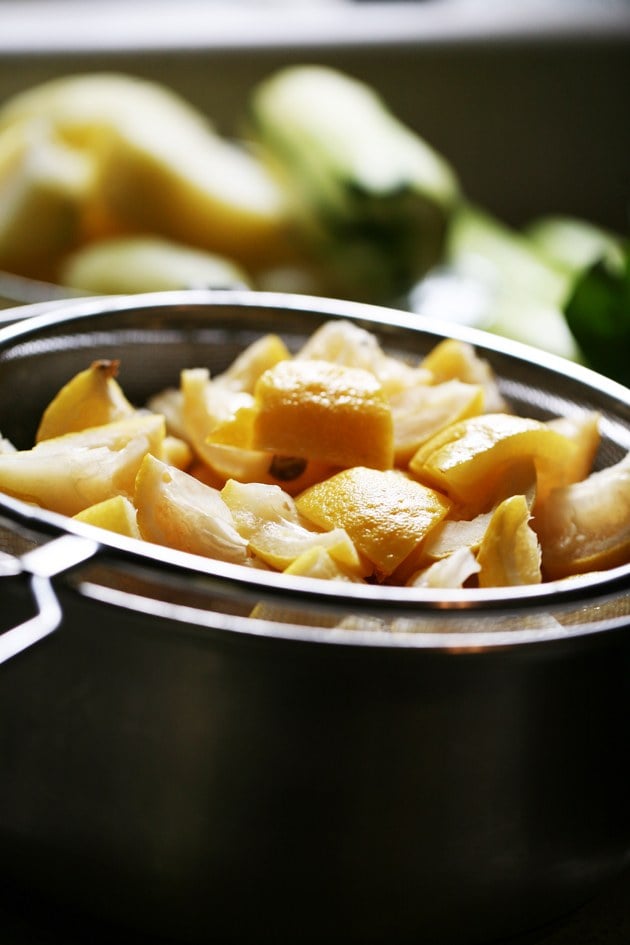
Once the lemons are soft, transfer them to a strainer or a colander and let them dry and cool a bit.

Once the peels are dry and cool, put them back in the pot or in a mixing bowl and add 6 tablespoons of oil…
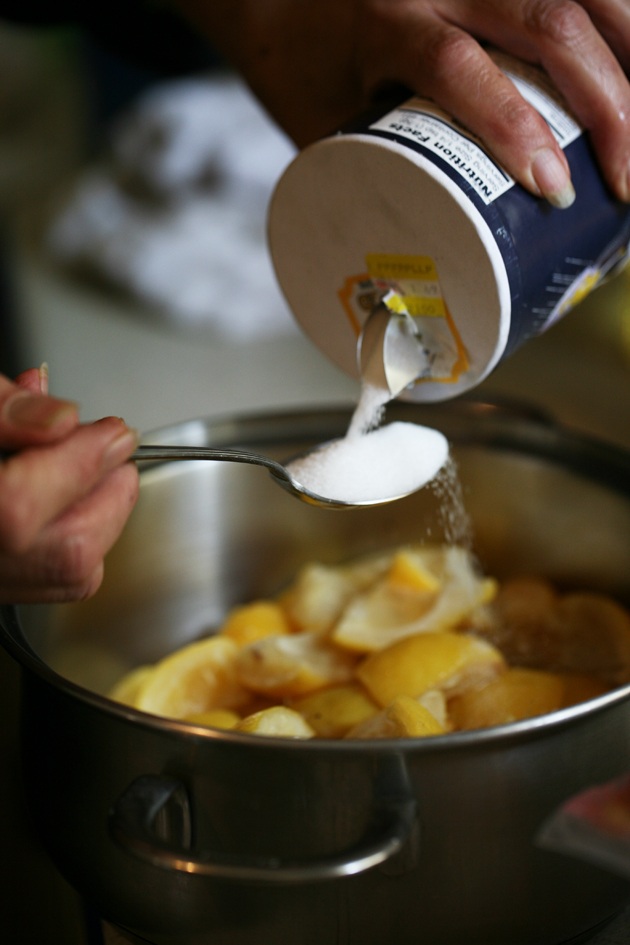
And 4 tablespoons of salt (preferably sea salt)…
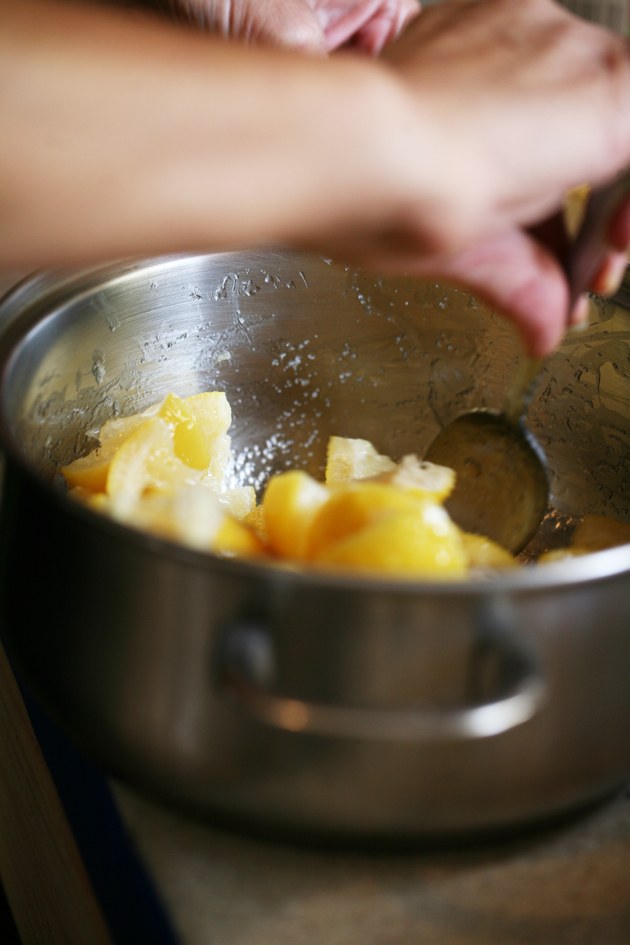
Mix the oil, salt, and lemon peel together…
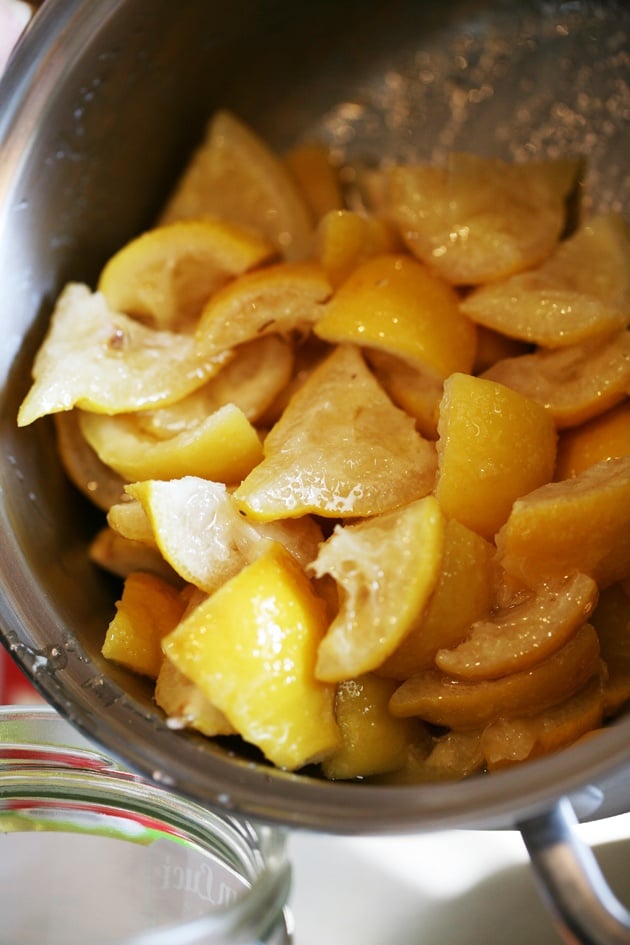
Until the lemons are all coated with the oil and salt.
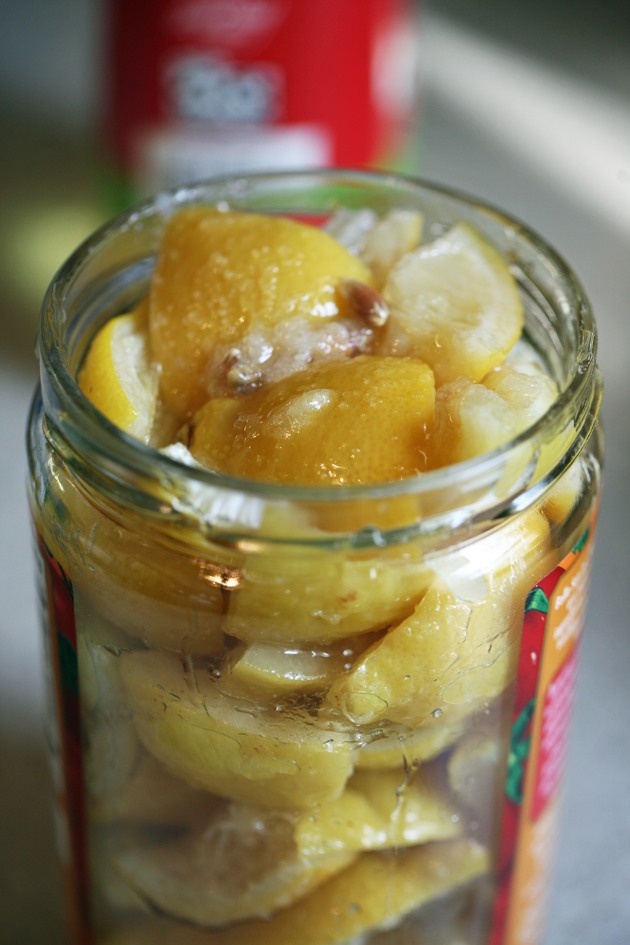
Then all you have to do is transfer the lemons into a jar and keep it in the fridge. They are ready to eat.
Notes About Preserved Lemon Peels…
Boiling – the reason we boil the lemons is that we want them to be ready to eat right away.
If you don’t want to boil the lemons you can cut your lemons, put some salt in a jar, then a layer of lemons, then a layer of salt, then a layer of lemons and so on until the jar is full.
Once the jar is filled with lemons and layers of salt, add oil all the way to the top. If you do it this way you can leave the jar in the pantry but it will take the lemons a couple of months until they soften.
Storing – the reason we keep the preserved lemon peels in the fridge is that we want to use a smaller amount of oil.
If you want to keep your jar at room temperature you would just have to add some more oil and make sure the lemons are covered.
Seasoning – another note to make is that you can add different seasoning to the lemons. You can add whole cloves of garlic, red pepper flakes, cayenne pepper if you like it spicy, maybe some thyme… Be creative.
Serving Preserved Lemon Peel…
You might be thinking… Yes, it sounds and looks simple enough to put together but what in the world am I going to use this in?!
Let me give you a few ideas…
Let’s say that you bake fish. You place your fish in tin foil and add olive oil and salt and pepper, maybe rosemary, and… Lemon peels!
You can so the same thing with chicken too.
Or maybe you make yourself a sandwich with mayo and turkey breast or another kind of lunch meat… Add preserved lemon peels to the sandwich.
Or let’s say that you make this delicious Mediterranean egg salad or, really, any other salad… Add preserved lemon peels to it!
You can use it to make a lemony pasta sauce or you can place it in the food processor and make a paste out of it!
There are so many ways to use these and they are all great, delicious ways.
I hope that you’ll give this recipe a try! I know it might be a bit out of the box… Maybe not a very common recipe, but I can assure you that it is delicious.
Theses preserved lemon peels will last weeks in the fridge. I usually make a big jar of them and then just grab a couple here and there to add to my sandwich or salad.
Make sure to always use a clean fork when you fish some out of the jar.
If you liked this recipe, here are a few more preserving recipes you might like…
Apple Scrap Vinegar (let’s use apple peels as well, shall we!?)
Preserving Peppers in Vinegar and Salt
How to Make Candied Oranges and Can Them
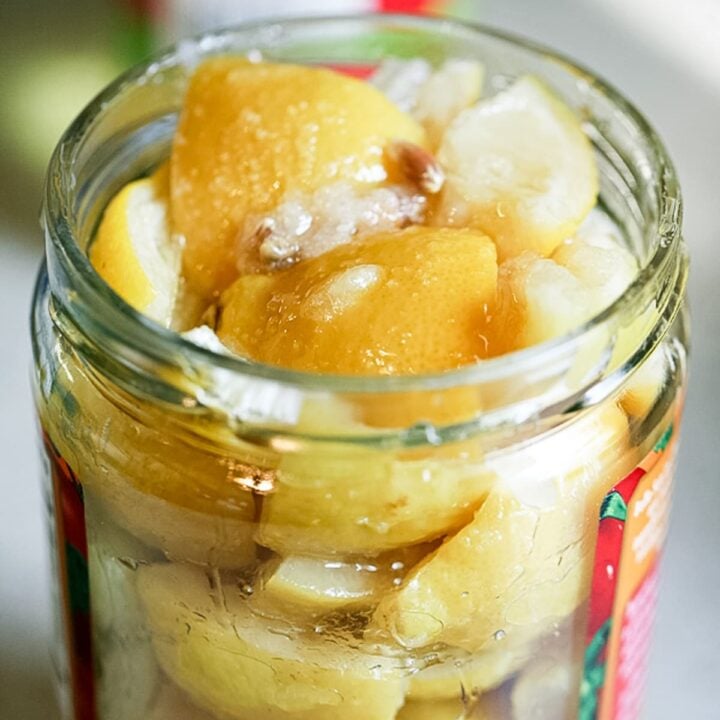
How to Preserve Lemon Peel
Delicious preserved lemon peels in oil and salt.
Ingredients
- Peel from 6-8 lemons
- 6 tablespoons oil (vegetables or canola will do, you can also try olive oil)
- 4 tablespoons salt (preferably sea salt)
Instructions
- Cut the lemon peels (each lemon to at least 8 pieces).
- Place the peels in a pot, fill it with water. Place the pot on the stovetop and bring to a boil.
- Lower the heat so the water is boiling gently.
- Boil until the lemons are soft (probably 30 minutes or so).
- Place lemons in a colander and let them cool down and dry.
- Transfer the lemons back to the pot or to a mixing bowl and add the oil and salt. Mix to coat the lemons.
- Transfer the lemons into a jar and keep in the fridge.
Notes
Kitchen Notes…
- Boiling – the reason we boil the lemons is that we want them to be ready to eat right away.If you don’t want to boil the lemons, you can cut your lemons, put some salt in a jar, then a layer of lemons, then a layer of salt, then a layer of lemons, and so on until the jar is full.Once the jar is filled with lemons and layers of salt, add oil all the way to the top. If you do it this way, you can leave the jar in the pantry, but it will take the lemons a couple of months until they soften.
- Storing – the reason we keep the preserved lemon peels in the fridge is that we want to use a smaller amount of oil.If you want to keep your jar at room temperature, you would just have to add some more oil and make sure the lemons are covered.
- Seasoning – another note to make is that you can add different seasoning to the lemons. You can add whole cloves of garlic, red pepper flakes, cayenne pepper if you like it spicy, maybe some thyme… Be creative.
Nutrition Information:
Yield: 1 quart jar Serving Size: 1Amount Per Serving: Calories: 942Total Fat: 86gSaturated Fat: 6gTrans Fat: 1gUnsaturated Fat: 76gCholesterol: 0mgSodium: 25420mgCarbohydrates: 63gFiber: 19gSugar: 17gProtein: 7g


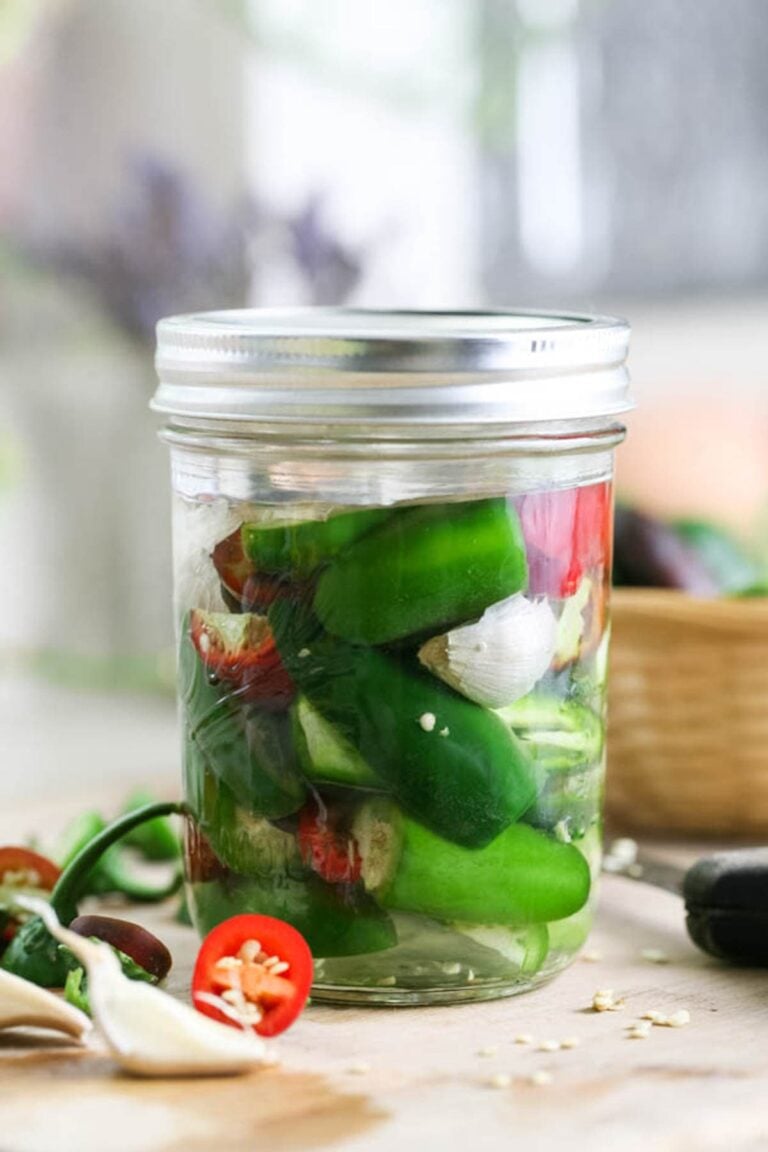
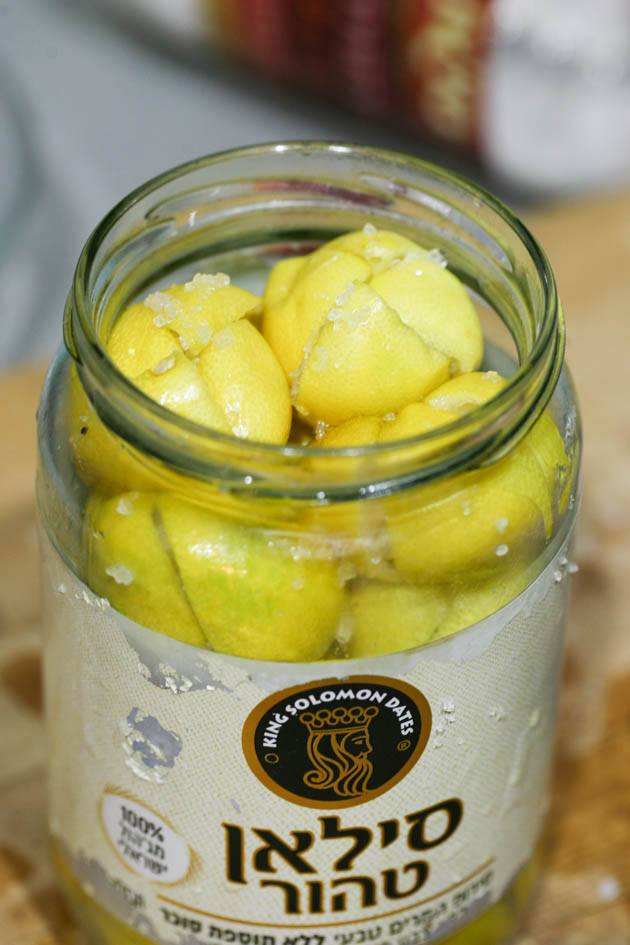
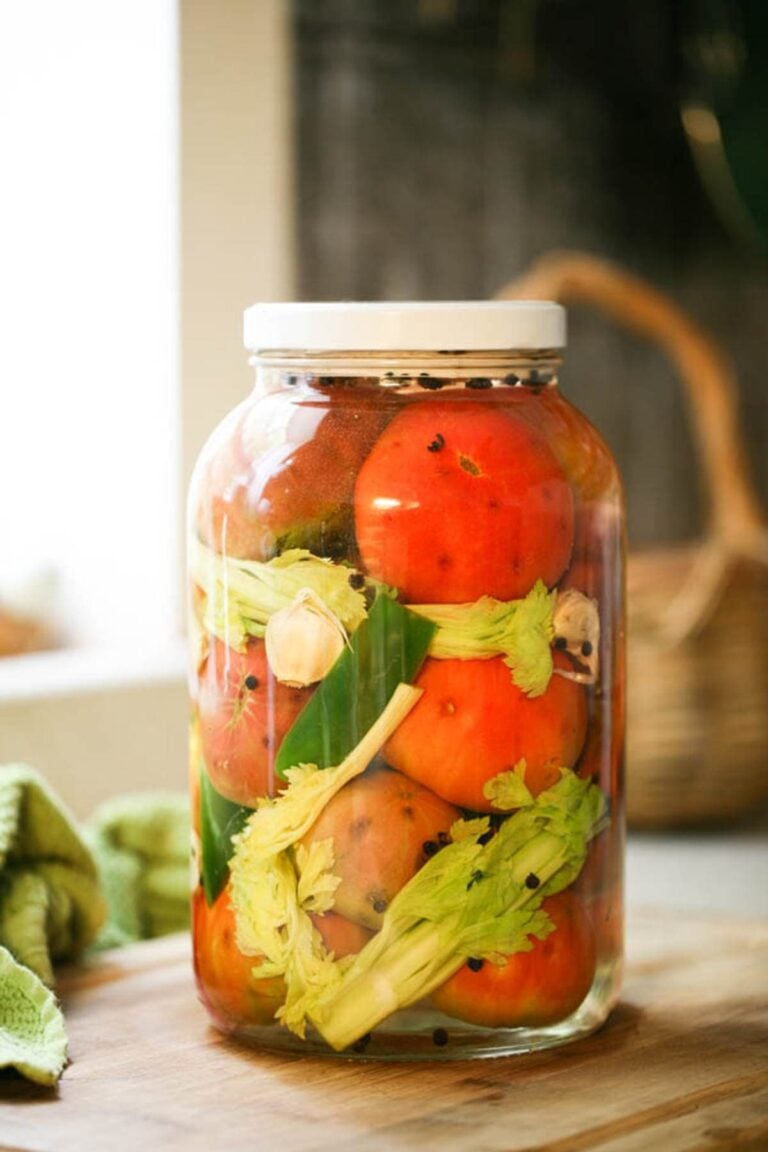

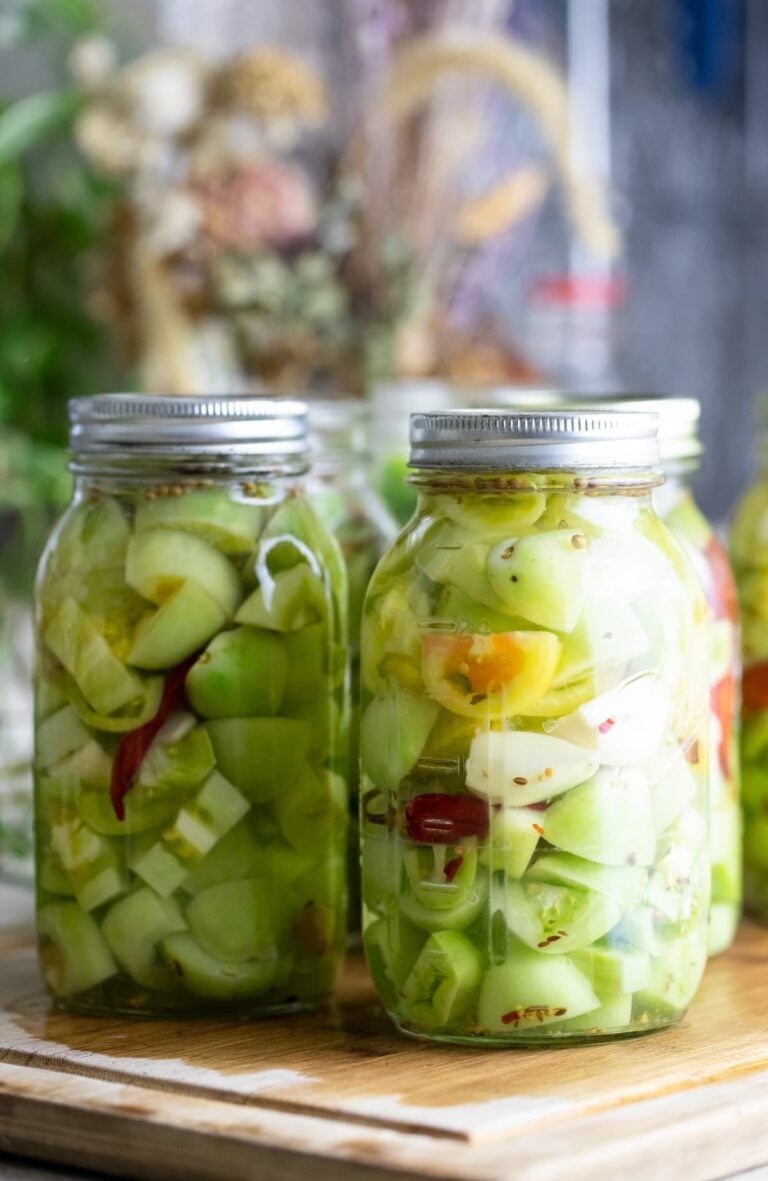
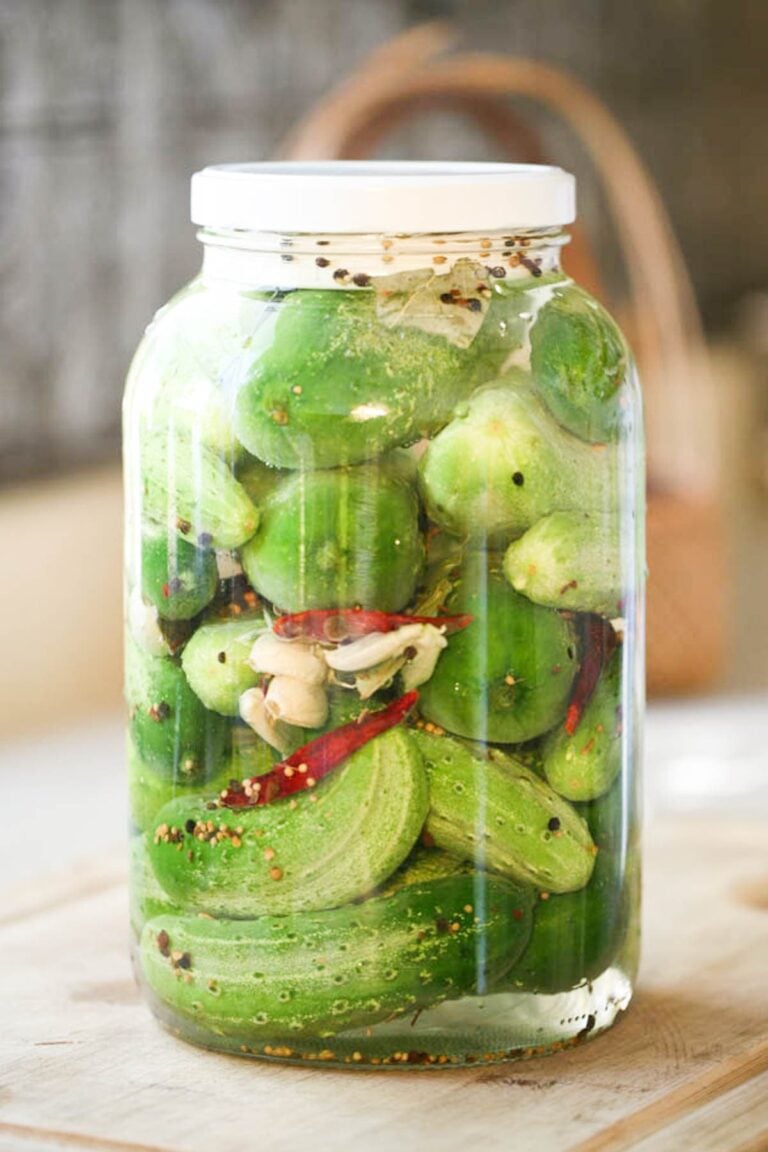
Hi The preserved lemon peel with salt and oil is very,very salty It gives dishes a nice lemon flavour but you cant eat it-too salty Can I use less salt or are you supposed to use course salt which would be less in qauntity
You can use a little less salt. Another option is to rinse the lemon peel under cold water for a minute before using it. It will wash some of the saltiness away.
I made it and it came out really nice.
What do I need to add to increase the shelf life please?
Nothing. It will last in the fridge or in cold storage for months!
Thank you Lee
However, does that mean it won’t last outside of fridge or cold storage?
I was hoping to give/post as gifts which would mean that jars would not meet the requirement of being kept cold and likely to spoil.
Regards
Harbinder
How do you preserve the lemon seeds?
You can place them in a zip lock bag and put them in the freezer or you can wash them, place them on parchment paper on the counter and let them dry. Then store in a bag in the fridge.
Can the water in which the lemons have been boiled is very slightly bitter but light sauce constancy so wondered if it can be used for anything else.
Definitely! You can cook with it.
Thank you, thats helpful.
I saved it so will definitely use it now.
Many thanks
These are very salty. Can you rinse or pat off the peels when you’re ready to use them?
Definitely! Tray patting them with a paper towel first. If they are still too salty for you you can try to rinse.
Thanks, I’ll do that also I think I can use them in recipes calling for salt snd just not add salt.
This sounds like an interesting taste, but my husband is on a low salt diet for his heart. I’m guessing the high quantity of salt is for preservation, but I wonder if it would work with less (or maybe with some ingredient other than salt)? We use a lot of limes and lemons, and I do feel bad throwing so much of them away.
The salt is important for the preservation process but maybe you can try with less salt if you intend to keep it in the fridge.
Oh my goodness, these lemons are amazing! So delicious with a bright and rich citrus taste, I love them. My family spends over $100/year on lemons and I was looking for a way to cut down on my purchases. This recipe is fabulous. And I love how gorgeous they look in the jar.
YAY! I am sooo happy that you like them. I eat them with everything… In a salad, in sandwiches… I am practically addicted to lemons so this is just another way for me to stick them everywhere. So happy you like them!
Hello! I’m currently giving this recipe a go. I’ve boiled the lemons but it seems such a shame to throw away the lemony water! Could you use this in some way? I’m assuming you can’t add it to you preserved lemons…? Or can you?
No, don’t add it to the preserved lemons. You can keep it in the fridge and use it when you make fruit smoothies maybe? Or in a baking recipe that calls for water and lemon zest. I’d try that.
Very good. Always felt bad throwing rinds away.
How would you use this on a sandwich?
Let’s say, mayo, slices of turkey lunch meat (or chicken breast, for example), slices of tomato, and a couple of lemon peels. Delicious!
Thank you!! My daughter requested lemonade with a big batch of lemons that we got, and I really wanted to try * something* new! We’ve been doing roasted lemon powder up to now, to preserve (tiny jar in freezer), and also salt-preserved lemons – both so lovely!) but I love that this uses the whole peel and “used” lemons, and can be used straightaway! Trying a first batch now. 🙂
It goes on many of my sandwiches! I hope that you’d like it.
Recently, I saw a chicken recipe with preserved lemon and it looked delicious. But, I’ve never enjoyed preserved lemon. I am anxious to try this, but am leery about how bitter this is due to all the white pith. Is this a valid concern?
I don’t know if to say that it’s bitter but the lemon peel and pith definitely has a unique taste to them. It’s like extra strong lemon… You’ll have to try and see if you like it, it’s really the only way. But you can make just a small amount to try.
Thanks, these preserved lemon peels sound like a very good thing to have handy. How long do they keep in the fridge?
They will keep for many months as long as you make sure to use a clean fork when you grab a few from the jar. Also, make sure that all the lemons are below the oil before you place the jar back in the fridge.
How are you making the lemon paste? Are you just throwing the boiled lemons into the food processor?
Yes, exactly. Throw them in and add oil as the processor is working until it’s reaching your desired consistency.
Never tried it before. Definitely going to make some today. I will also try my trusty Infinity Jars to breath some extra shelf life into it. My herbs and oils stay fresh for a long time with Infinity Jars and hoping it will do the same with these lemon peels. https://infinityjars.com/collections/screw-top-jars
Thank you for posting the link to the Infinity Jars. I just ordered!
Can you mince these and use them as you would grated lemon peel?
Either way, what a great thing to know how to do with the “leftovers” when you’re just using the juice.
Thanks!
I don’t believe it will be the same as a grated lemon. When you mince it, it will turn into a paste. It’s actually nice to use it this way, just spread it on a piece of fresh bread but I am not sure it will be good for baking and such. If you try, come back to let me know if it worked. Thanks for visiting!
Sounds great, gonna make a try to make! Thanks so much!
love your preserves recipes
i too love home cookingss,hate wasting anything!